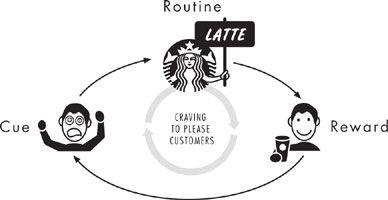Last week we shared senior living insights from LeadingAge’s PEAK Leadership Summit. Here are several ideas from the conference specifically about how to implement and lead change.
What are you doing within your own organization to ensure you are continuing to innovate and evolve? Perhaps these examples can provide some food for thought:

YMCA core values, as represented by YMCA Calgary
1. Know what you stand for – Take the advice of Kelly Papa from Masonicare offered during her session Effervescence: Leading Change with Enthusiasm. Write down your core values and the actions you will take to live those values. She noted that this will make it easier to practice your values so everyone around you knows what you stand for.
INSIGHT TO ACTION: Do this same exercise with your organization – an excellent start to a repositioning strategy or refreshing a brand. Can you imagine how much more powerful a message you send if your residents see your tagline being demonstrate in every interaction they have?
2. Find your Passion – We also loved Kelly’s working theory on leading change: Inspire, Connect & Transform. She has observed that a primary catalyst for change is often just one person’s passion. That passion can become even more powerful when they connect and empower others to share in their excitement.
Kelly illustrated this with a story about a nurse at Masonicare who had sent emails about a therapy for Parkinson’s disease called “BIG & LOUD.” Since the leadership team was unfamiliar with the effectiveness of the therapy, no one had pushed the idea forward. Not until Kelly saw the nurse demonstrate the treatment did she realize its value and was able help secure the proper training.
INSIGHT TO ACTION: What are you passionate about – what is your staff passionate about? Are they empowered to share their passions, especially those that align with your community’s values? Do you make time to listen and be a conduit to connect their passion into transformation?
3. Transform Habits – I highly recommend Charles Dughigg’s book The Power of Habit. Dughigg served as PEAK 2014’s keynote speaker and shared many ideas regarding how to effectively use the science behind our habits, social connections and even a crisis to affect positive change in your organization.
Some actionable take-a-ways from his research included:
* Willpower: Research shows willpower (self-control) is similar to exercise endurance – the more you practice, the easier it becomes. Beware, however, as major stress or inflection points can completely derail one’s willpower.
INSIGHT INTO ACTION: It is important for leaders to tune into the stressors or triggers of their team and offer strategies for perseverance. Teach and practice tools like Starbuck’s LATTE method (Listen, Acknowledge, Take, Thanks, Encourage) to handle difficult customer encounters gracefully.
* During a crisis people are more susceptible to change, Duhigg found, because after a crisis people are more likely to make the connection between their current routines to the negative outcomes of the crisis.
“Good leaders will seize crises to remake organizational habits.”
INSIGHT INTO ACTION: Be aware of the habits you may not even know exist: Every organization has unwritten rules regarding how an organization communicates.
* Give employees “permission” to challenge a superior. At Rhode Island Hospital, doctors didn’t listen when nurses challenged them and several patients’ lives were lost as a result.
* Take time to listen to front line employees’ ideas. They could lead to innovation, solving problems, cost savings and may even create a competitive advantage. For example, at the multi-national company Alcoa, their new CEO set an unwavering rule to report safety issues across the company in “real time.” This led to the creation of a worldwide corporate email system in which employees shared more than accident reports. They now shared competitive intelligence and pricing information. Since everyone in the company had access to the tool, even employees on the production floor could share the process improvements.
3. All Stakeholders Matter – Make sure that you get your residents and employees invested in implementing change. I had the pleasure of sitting with three residents of Thomas Circle during a roundtable discussion lead by Amy Levner of AARP. Thomas Circle is a community in the heart of Washington, D.C. a location that the residents I spoke with really valued. The residents offered such a different perspective on the conversation topics than the senior living professionals gathered for PEAK.
INSIGHT INTO ACTION: Don’t forget your existing residents when approaching a change or innovation. Their insights and experiences with your organization could be invaluable.
BONUS – Invest in the Next generation of young leaders NOW – Larry Zook of Landis Communities is a loyal Mature Marketing Matters follower – thank you, Larry! – and a leader in senior living. He emailed me that Charles Duhigg’s session reinforced for him “the opportunity we have to encourage young people new to the workforce to become serving leaders, and to celebrate our organizational cultures and habits that empower and reward service to others.“



